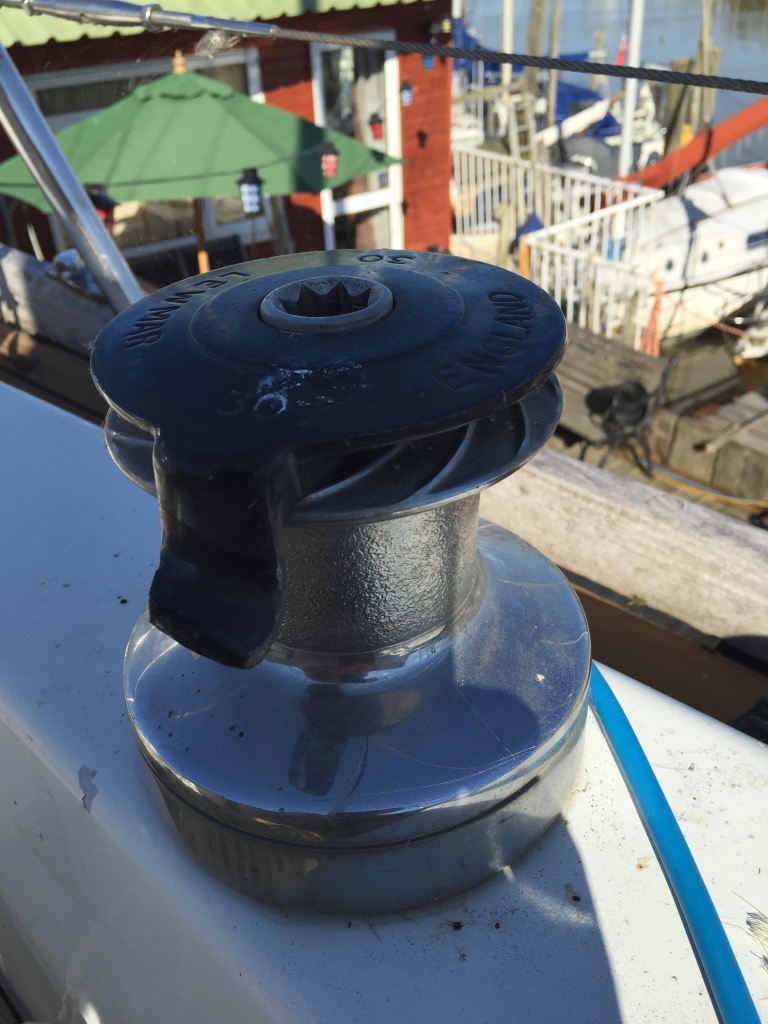The two Lewmar self-tailing winches in the cockpit of Anne Marie needed repair as they jammed whenever they were used and the central spindle was loose and could be removed without effort. They are probably 40 years old and the casting had corroded. Rather than spend many hundreds of pounds replacing them I decided to fix them.

The central spindle is normally held in place with an 8mm thick half-moon plastic key (No 10 in the diagram. Because the half moon key has worn away the central spindle could be removed. Lewmar sell a new key but being tight-fisted I decided to make my own. How hard could it be?
I had, within my ‘garage hoard of useful stuff that might come in handy one day’, a 50mm diameter bar of acetal. I had previously used part of it to make some new sheaves for the mast. I cut an 8mm disc from it and drilled out the centre using a hole saw. I starting by cutting the outside diameter of the spindle and then drilled the centre to the diameter of the central spindle key-way (just above the number 8 in the diagram). I then had an 8mm thick doughnut of acetal.
Using my trusty Swiss Army knife I then cut a slice out of the ring to the right size and shape. I inserted it into the casing of the winch and hey presto the central axle no longer comes out.
To solve the jamming problem I debated whether to add a spacer at the point where the problem occurs but then I remembered that there are two spacers (at 9 in the diagram) already in the winch. Removing the yellow one lowered the whole affair by about 2mm which solved the problem. With just a little bit of my time and some imagination I learned about winches and gave them a new lease of life.





Hello Mike, I’m trying to take apart a similar winch and am unable to remove the bottom cogs – on your photo I have the same silver pin nestled in the winch housing. I’ve tried tapping from different directions – any ideas on how to remove it? Kind regards Jasper (Contessa 32 owner)
LikeLike
Hi Jasper. I assume you are referring to the silver pin to the right which holds the two gears in place (No 14 in the diagram). The top of it is a shaped head which rotates into a slot to hold everything in place. I had some trouble with this too but it needs encouragement to spin (clockwise I think) so that the head comes out of the slot. This then enables the pin to be extracted (again with some encouragement). It does turn and it does extract. I used a quantity of WD40 to soak into it but a drift and a light hammering from the side worked for me. Once out a good clean and it moves freely – at least it should. Perseverance is the key I think.
LikeLike
Thank you – I’ll give this a go!
LikeLike
Thank you – Yes I did mean the silver pin – I’ll give that a go.
LikeLike